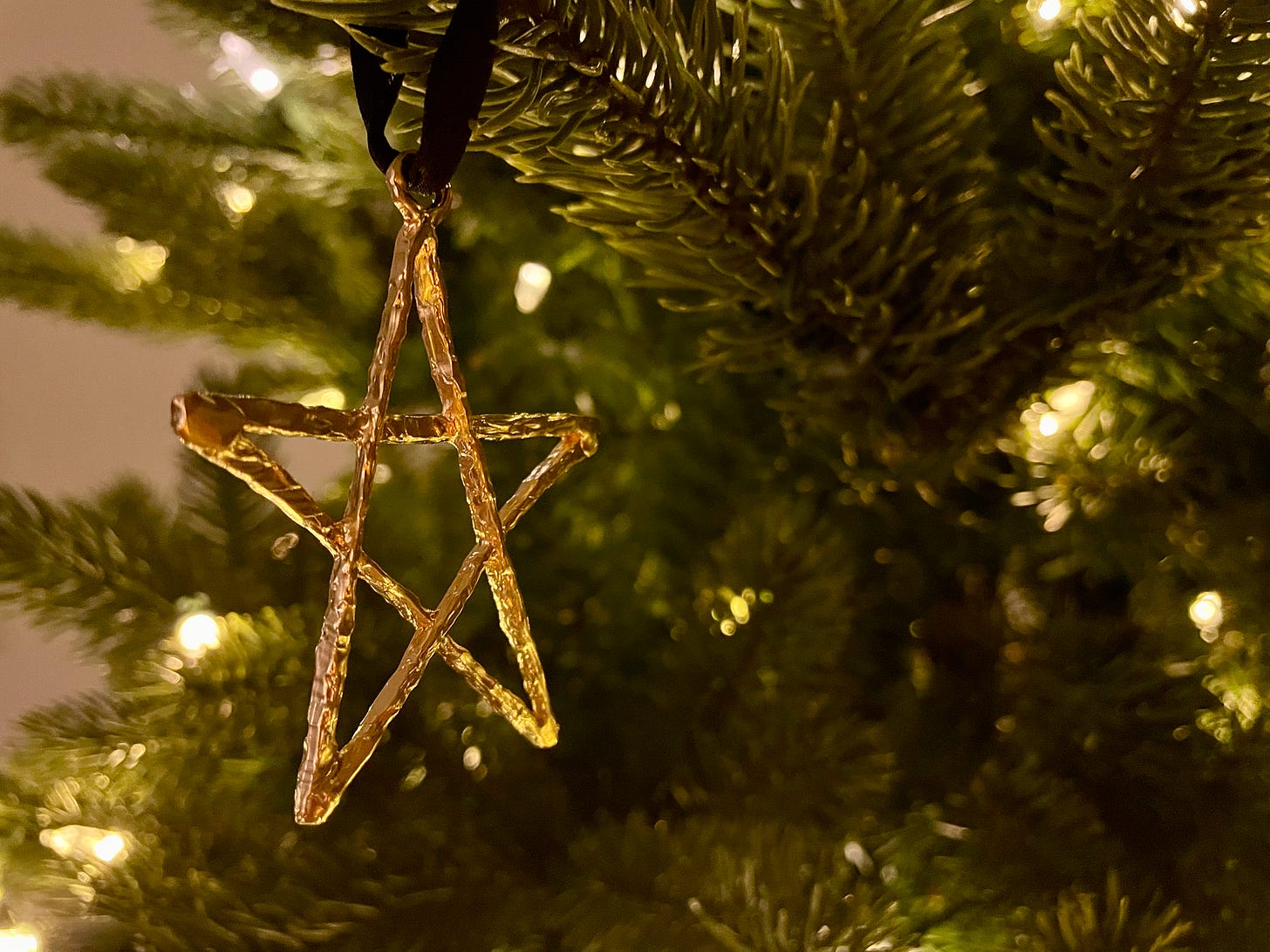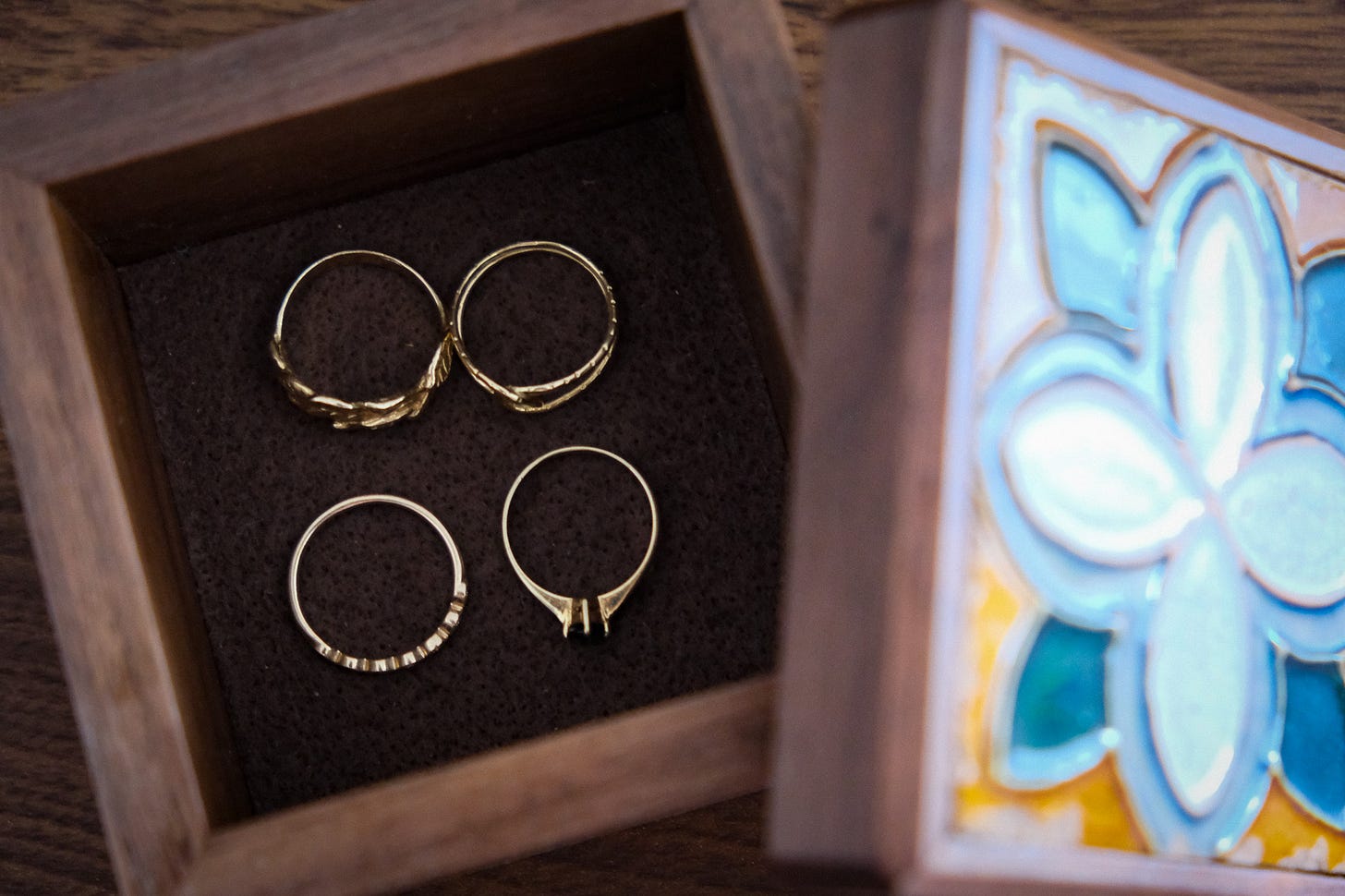Week 4: All That Glitters Isn't (Pure) Gold
A brief overview of gold, silver, and platinum in jewelry
I had a busy past week traveling - first to Taipei for a marathon and then to Seattle for the holidays. (Trust me, it was tempting to title this post something around jewelry making being a marathon and not a sprint… but I resisted, barely.)
Although I am away for very fun reasons, I’m a bit sad to miss a few weeks at the jewelry shop! But I think that’s a sign of how much I enjoy it.

I started working on a few wax carvings by myself at home and enjoy learning with every attempt. Next week I’ll share more details about the carving experience and what I’m trying out.

This past week, I spent most of my jewelry-dedicated time reading about the materials of fine jewelry. To help myself remember, I summarized below key points that I learned about gold, silver, and platinum. Hope you learn something new as well!
The studio that I apprentice at, ileava jewelry, predominantly uses gold but also has some platinum and silver pieces. My mentor told me that jewelry is rarely made out of a 100% pure metal. Instead, it is usually made from a mixture of metals, called an “alloy”.
Different mixes of metals can affect jewelry’s durability, appearance, and price.
Gold
Gold is a popular metal choice for jewelry and my personal favorite.
It is highly malleable and doesn’t tarnish or rust. As a result, mixing gold with other metals is a practical choice for fine jewelry.
A karat (not to be confused with carat or carrot) when used to describe gold measures its purity. 24 karat gold is 100% gold.
Every other number of karats indicates what ratio out of 24 is gold. For example, 18 karat gold is 18 parts gold and 6 parts other metals (often silver, copper, or nickel). These other metals are usually harder and less expensive than gold; mixing them with gold may affect the color (gold alloys can be white, pink/rose gold, etc.).
While the ratio of gold alloys can vary, it’s common to see jewelry made from 9k, 10k, 14k, and 18k gold. Generally, the higher the karat number, the more valuable but the less durable the alloy.
(As an aside, 14k became popular in the US as an alternative to 18k during the Great Depression as it is less expensive. In Japan, 10k and 18k are considered standard. My mentor shared with me that 14k is common mostly in countries with a strong US influence.)
Because gold is a soft and heavy metal, pure gold is typically not a good choice for jewelry. 24k gold is susceptible to scratches and bents and is especially not suitable to set diamonds or other precious stones.
10k or 14k are popular choices for everyday jewelry and 18k is often desirable for occasion pieces.
“Gold? Yellow, glittering, precious gold? This yellow slave will knit and break religions, bless the accursed…”
~ William Shakespeare, Timon of Athens
Silver
Silver is often used in jewelry due to its durability and affordable price point.
Like pure gold, pure silver (also known as fine silver) is not common in jewelry. On the one hand, pure silver’s malleability makes it a great candidate for delicate artistry. However, it is also easy to damage.
Instead, silver’s most popular alloy for jewelry is sterling silver (92.5% pure silver and 7.5% another metal, often copper). Among fine jewelry, sterling silver tends to be economical for everyday wear.
Other alloys of silver include coin silver (90% silver traditionally melted down from coins and 10% other metals), Brittania silver (>95.83% pure silver and the remaining metal usually being copper), Argentium silver (a tarnish-resistant silver typically made up of either 93.5% or 96% silver, 3-5.5% copper, and the remainder in platinum or germanium). I’m particularly interested in casting pieces in Argentium silver since I prefer the brighter, lower-maintenance finish.
Sterling silver oxidizes, so it is necessary to regularly maintain jewelry pieces to remove tarnishes.
For aspiring jewelry makers like myself, silver is a great metal to practice with since it is less expensive than gold or platinum.
Platinum
Platinum is a naturally white metal with high density. The metal is long-lasting and extremely durable.
Due to its resistance to abrasions and damage, platinum is a prized candidate for engagement or wedding rings; it can withstand quotidian wear and tear.
Unlike gold and silver, platinum is not mixed with other metals much. The legal highest alloy grades that are often seen are 85%, 90%, and 95% pure platinum.
Platinum is generally more expensive than gold or silver due to its rarity and density (more metal has to be used in a jewelry piece because of its density).



